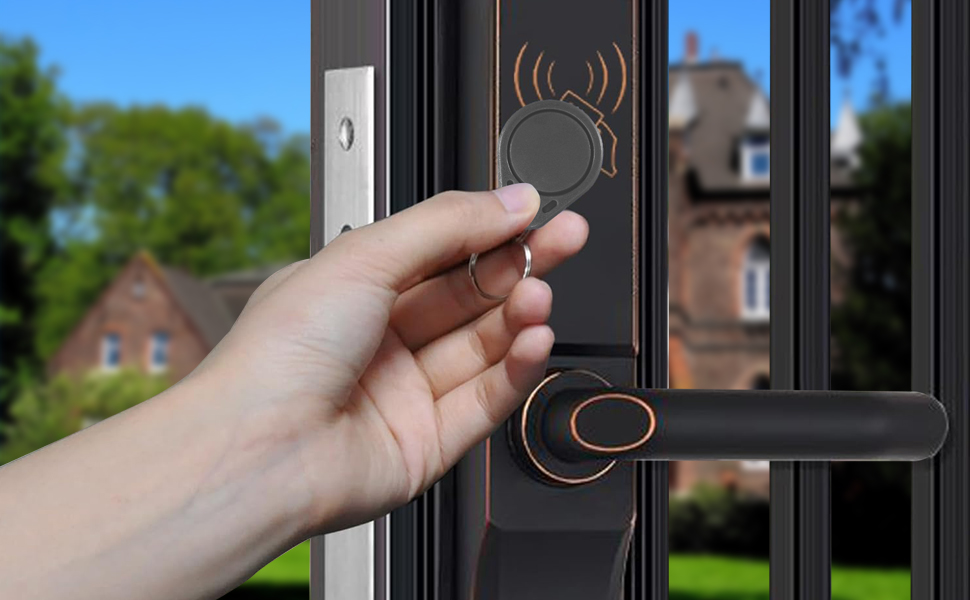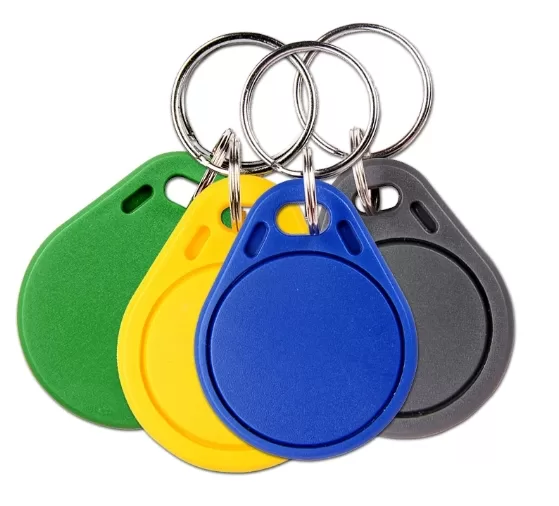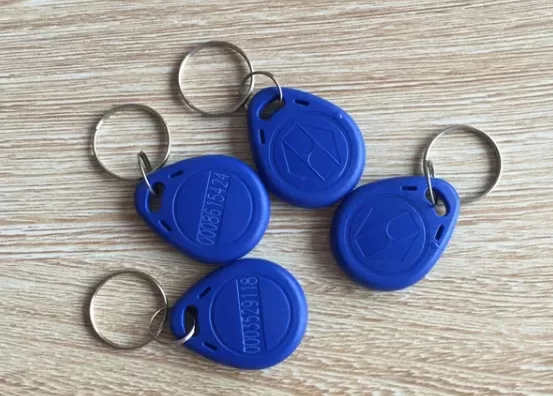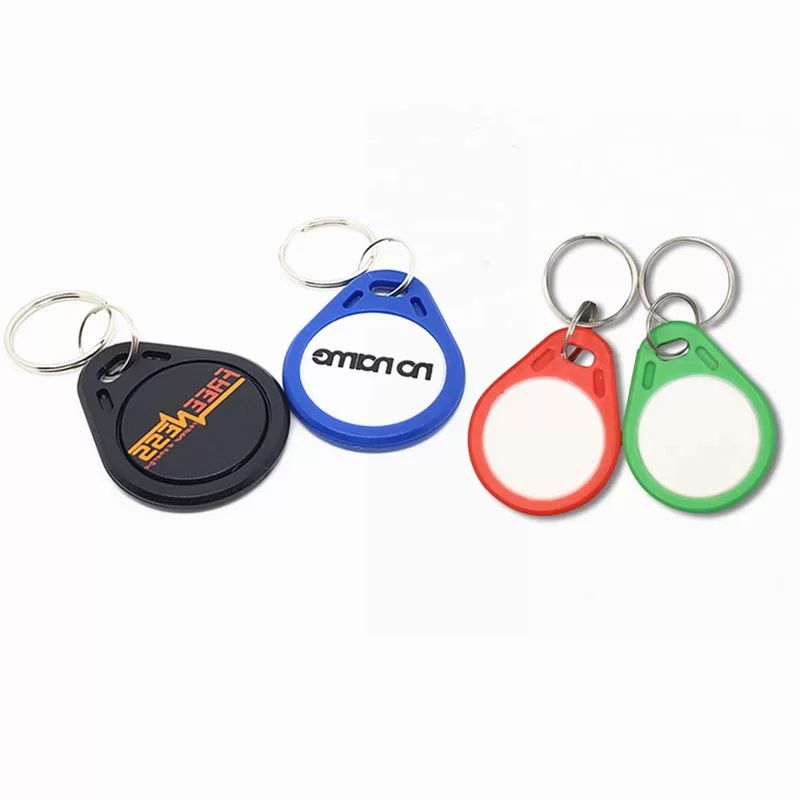
How does the frequency of an RFID key fob affect its performance?
As a company specializing in RFID key fob, we understand that frequency is one of the most critical factors affecting the performance of this technology. Different applications require different frequencies to work best, and understanding these differences can help users make the best choice for their specific needs. Next, we will explore how frequency affects the performance of RFID critical fobs in various applications and address key considerations for potential buyers.
Introduction to RFID Frequencies and Key Fob Performance
RFID key fobs operate at specific radio frequencies that impact their range, read speed, and compatibility. The primary frequencies for RFID systems include Low Frequency (LF), High Frequency (HF), and Ultra-High Frequency (UHF). Each frequency has distinct characteristics, making it suitable for specific tasks. In this section, we’ll introduce these categories and how they relate to the general performance of RFID key fobs. Frequency influences the overall range, speed, and accuracy with which the RFID reader can detect the key fob, directly impacting the user experience.

Low-frequency key fobs and their applications
Low-frequency (LF) RFID key fobs operate at 125-134.2 kHz. LF frequencies are ideal for close-range applications and less susceptible to metal or liquid interference. Manufacturers commonly use these key fobs in animal tracking, personal identification, and automotive applications due to their stable performance in challenging environments. However, LF RFID key fobs generally have a shorter read range and slower data transmission, making them less suited for fast-paced environments.
The lower range of LF frequencies benefits applications requiring proximity, security, or controlled access. For example, an RFID key fob used to access a secure building may benefit from LF technology because the reader can detect the fob only within a limited, defined space, enhancing security and control over who gains access.
High-frequency key fob and mid-range performance
High-frequency (HF) RFID key fobs typically operate at 13.56 MHz, providing a middle ground between LF and UHF regarding range and data transmission speed. HF frequencies are widely used in applications like contactless payment, access control, and public transportation passes. Near-field communication (NFC) is the most popular protocol for HF RFID, allowing devices nearby to exchange data.
The performance of HF RFID key fobs is generally reliable and faster than LF options, with a read range of a few inches to about a foot, depending on the setup. HF systems work well with various materials and are relatively immune to interference, making them versatile and practical for many mid-range applications.

UHF key fob for long-distance applications
Ultra-high-frequency (UHF) RFID key fobs operate between 860 and 960 MHz, which allows for much longer read ranges and faster data transmission than LF and HF. UHF RFID is commonly used in inventory tracking, asset management, and toll collection systems, where rapid scanning over more significant distances is necessary. However, UHF systems can be more sensitive to environmental factors, such as interference from metals and liquids, impacting performance in specific applications.
UHF RFID key fobs are often a good choice for users needing long-range, hands-free solutions. For example, in a parking garage application, UHF RFID can allow users to enter without physically presenting their fob at a close range, as long as the reader is within range to detect the signal.
Environmental factors affecting critical fob frequency
The environment plays a significant role in the effectiveness of an RFID key fob at any frequency. Factors like metal, water, and radio frequencies can interfere with the RFID system. LF RFID key fobs, for instance, are less impacted by these factors, making them ideal for environments with a lot of metal or liquid presence. HF and UHF fobs are more sensitive, but strategic placement and shielding can help mitigate these issues.
When choosing an RFID key fob, users should consider where and how it will be used. For instance, an industrial environment with heavy machinery may benefit from LF or specially tuned HF systems, while open, metal-free spaces might allow UHF systems to perform at their best.

Power Consumption and Battery Life in Different Frequencies
The frequency at which an RFID key fob operates also impacts its power consumption, which affects battery life in active RFID systems. Generally, higher frequencies, such as UHF, may consume more power than LF or HF, especially in active RFID systems where the fob periodically broadcasts a signal. On the other hand, RFID readers power passive RFID key fobs, making frequency impact less significant in power consumption.
Understanding power consumption is essential, especially for industries where fobs are used continuously or must operate reliably over extended periods. Passive RFID key fobs offer users longer life spans and lower maintenance since they do not require an internal battery. This makes passive HF and LF key fobs popular for general identification applications, whereas UHF options might be better suited for active, high-frequency environments.
Choosing the Right Frequency for Your RFID Key Fob Needs
Selecting the appropriate frequency for an RFID key fob depends on the application’s specific requirements, environmental conditions, and performance expectations. LF and HF RFID key fobs are optimal for short-range, secure applications. UHF is ideal for longer ranges and faster data transfer but requires careful environmental consideration to ensure stable performance.
Whether users need RFID critical fobs for building access, tracking, or other purposes, understanding the frequency impact will help them choose suitable products. Users seeking durability and consistent performance in varied environments may find LF and HF more appropriate, while those needing range and speed might opt for UHF.
Optimizing Performance by Understanding Frequency in RFID Key Fob
The frequency of an RFID key fob is a crucial determinant of its performance, range, and suitability for different applications. From short-range, proximity-based systems using LF and HF to long-range, fast-response setups with UHF, each frequency brings distinct advantages and limitations. By understanding these nuances, users and buyers can make informed choices that align with their operational needs.


